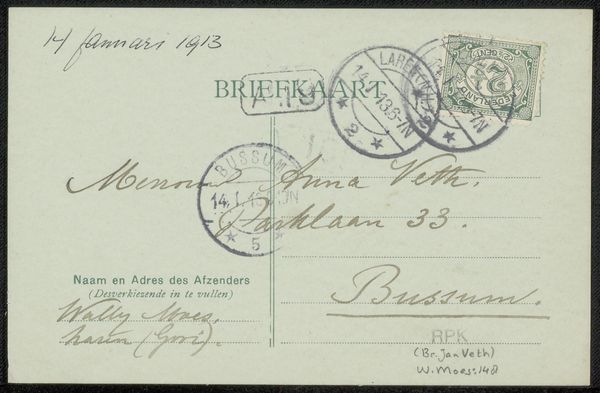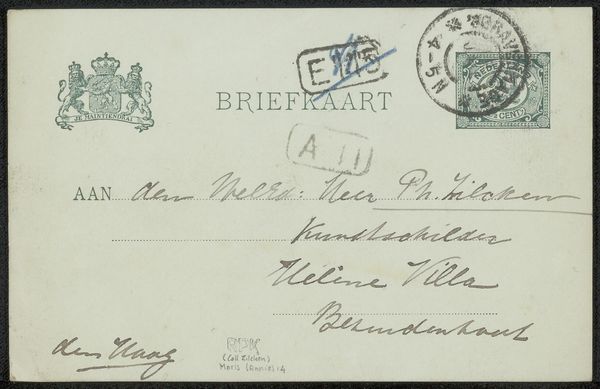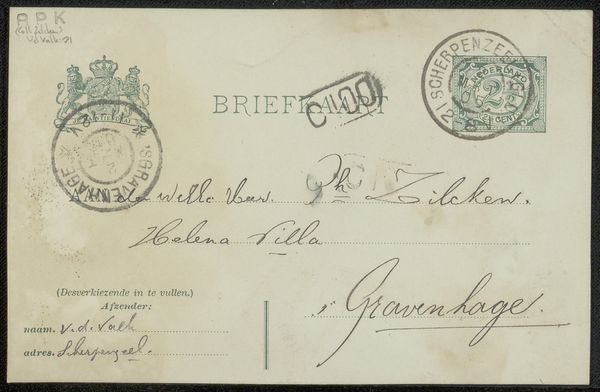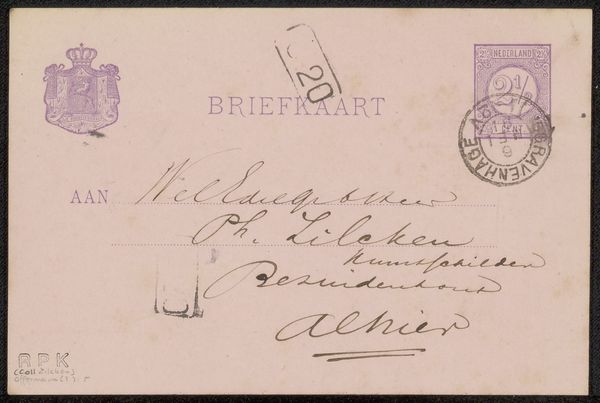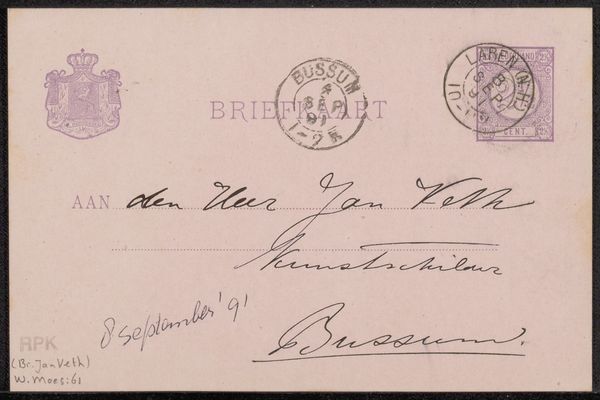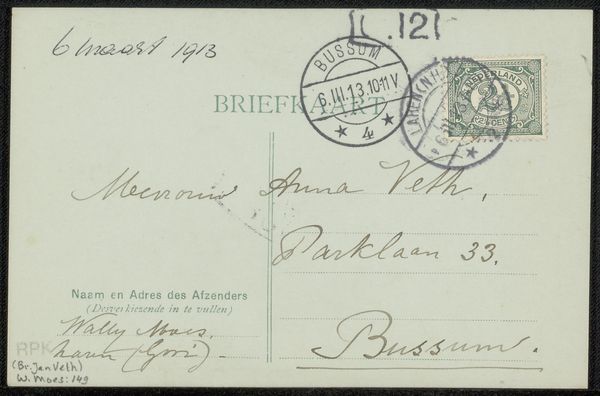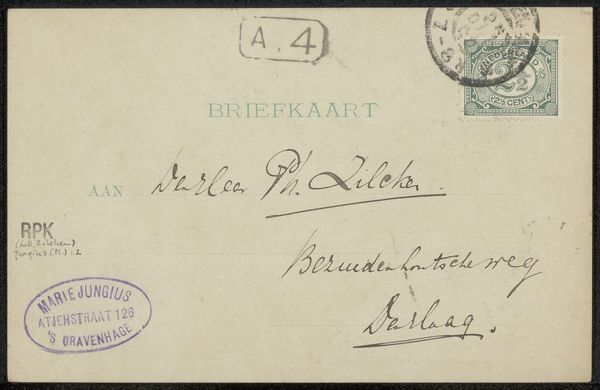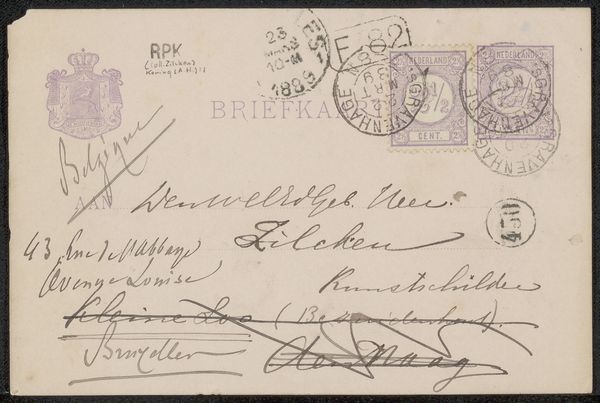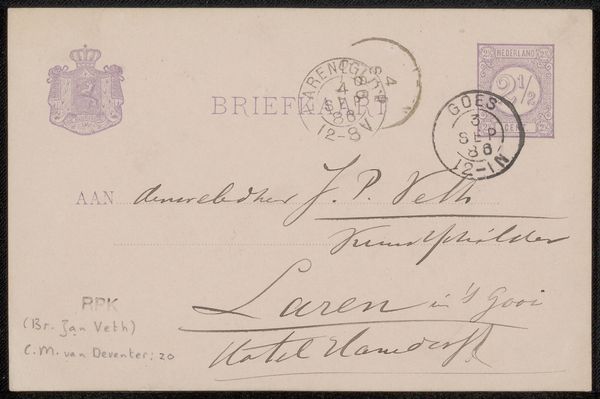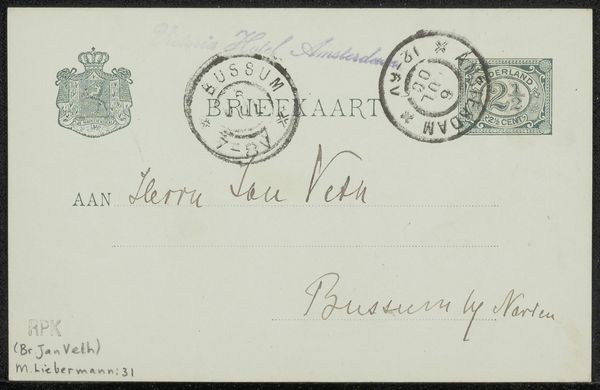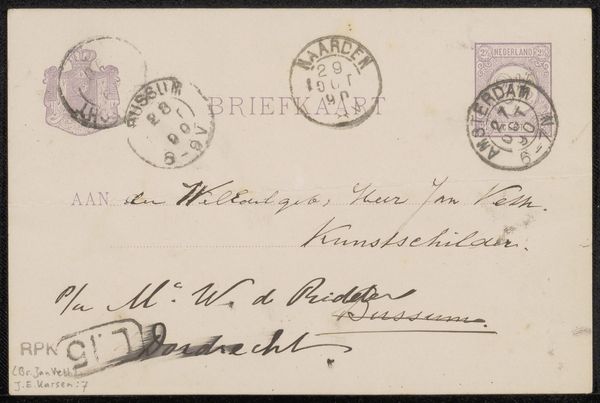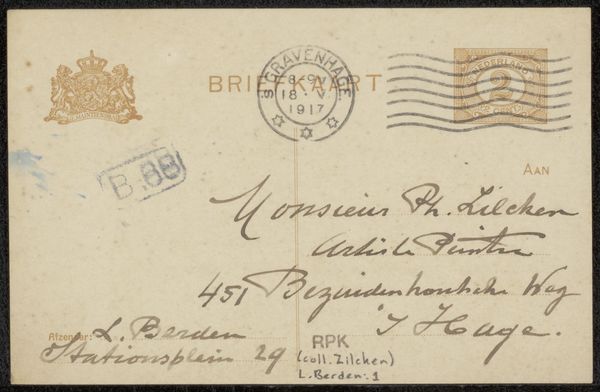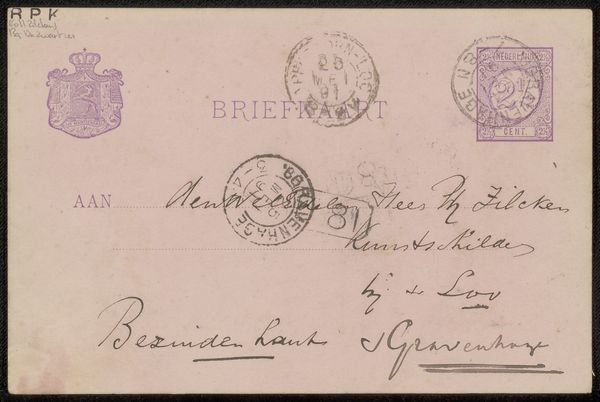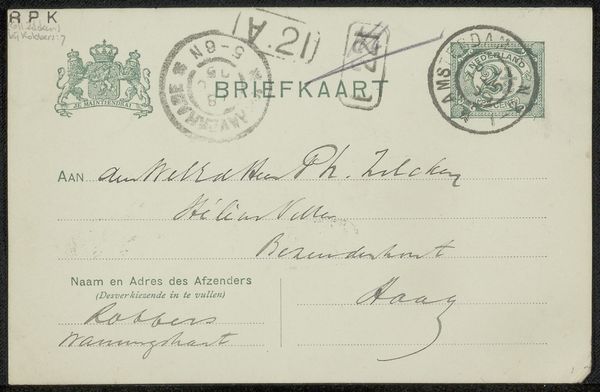
mixed-media, paper, photography
#
mixed-media
#
hand-lettering
#
hand lettering
#
paper
#
photography
#
calligraphy
Copyright: Rijks Museum: Open Domain
Curator: This object before us is a mixed-media postcard by Wally Moes, simply titled "Briefkaart aan Anna Dorothea Dirks." Although the exact date is not specified, we know it was created before 1916. It presents a fascinating example of hand lettering on a printed card. Editor: Immediately striking! There's a delicate formality to it, even though it's "just" a postcard. The graceful hand lettering paired with the official stamps evokes a bygone era, almost a time capsule of social decorum. Curator: Indeed. It invites reflection on the role of handwritten correspondence. Before mass communication, such postcards were important artifacts of everyday communication, imbued with a certain weight now mostly absent in our digital missives. It becomes an intimate snapshot. Editor: You mention intimacy and I see this captured in how handwriting allows subtle personal expression within standardized forms, the gentle curves in contrast to the rigid printed lines beneath. It humanizes the whole thing! But what do we know of Anna Dorothea Dirks, or the wider socio-political factors influencing this exchange? Curator: Understanding the recipient and the sender places this object within a social network. Anna Dorothea Dirks may have been a family member, acquaintance, or patron, someone important within Wally Moes' artistic circle. Postcards were affordable and popular during the late 19th and early 20th centuries, an essential for maintaining social connections, especially for those living outside major cities. The stamps here suggest something of these practical considerations. Editor: Right, it’s not simply about personal expression. The placement, the very act of sending and receiving this postcard, highlights how communication became part of the increasingly interconnected socio-political infrastructure of the early 20th century. The postal system itself shaped daily lives and allowed personal networks to expand. Curator: Looking closely at the hand lettering again, I am drawn back to thinking how that visual culture can communicate the feeling of connection despite the physical distance it bridged. In turn it allows a tangible form of cultural memory. Editor: It reminds me to think about the meaning that these material objects continue to hold within society. It may have just been a quick hello, but its art makes you pause to reconsider a simple everyday human need that hasn't disappeared with time.
Comments
No comments
Be the first to comment and join the conversation on the ultimate creative platform.
